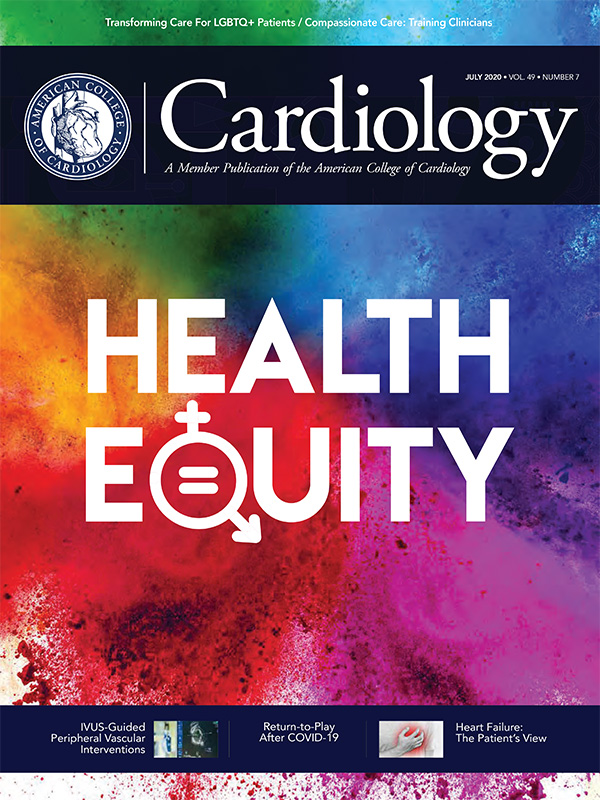JACC in a Flash
Featured topics and Editors' Picks from all of ACC's JACC Journals.
Minority Populations Underreported, Underrepresented in AFib Trials
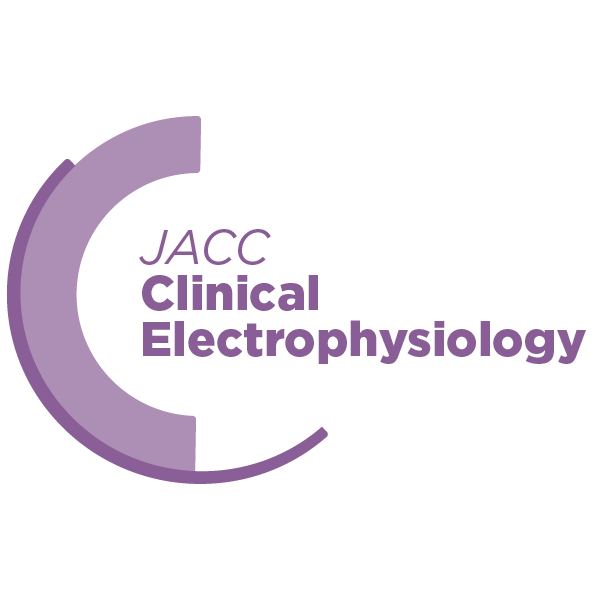
Participant-level racial/ethnic minority data are reported inconsistently and heterogeneously in contemporary guideline-informing atrial fibrillation (AFib) clinical trials, found a study published in JACC: Clinical Electrophysiology.
Ashish Sarraju, MD, MPH, et al., assessed current gaps in racial/ethnic minority participation in AFib studies. "[Ensuring] minority participation in clinical trials is important for the generalizability of [AFib] therapies and practice guidelines across the country."
The authors examined data from 34 clinical trials cited in the 2019 American Heart Association (AHA)/American College of Cardiology (ACC)/Heart Rhythm Society (HRS) Focused Update of the 2014 AHA/ACC/HRS Guideline for AFib.
Of the 34 trials studied, 15 (44%) reported participant-level racial/ethnic data and eight trials reported geographic areas without participant-level data. Overall, 14 trials reported non-Hispanic white participation; eight trials reported African American participants; six trials reported Hispanic participation; and seven trials reported Asian participation rates.
The study authors also "found heterogeneity in reporting across major [AFib] trials, with inconsistently reported rates of [African American], Hispanic, and/or Asian participation. Hispanic and Asian groups were not disaggregated likely due to low representation, which is notable given documented health differences within disaggregated subgroups."
The study showed that in proportion to the U.S. population, African American and Hispanic populations are underrepresented in AFib clinical trials. "Future efforts should focus on standardized reporting and improved participation of racial/ethnic minorities in clinical trials," write the study authors.
Sarraju A, Maron MJ, Rodriguez F. JACC Clin Electrophysiol 2020 Jun;6:739-41.
Cardioprotective Therapies Underused in Patients With Cancer History
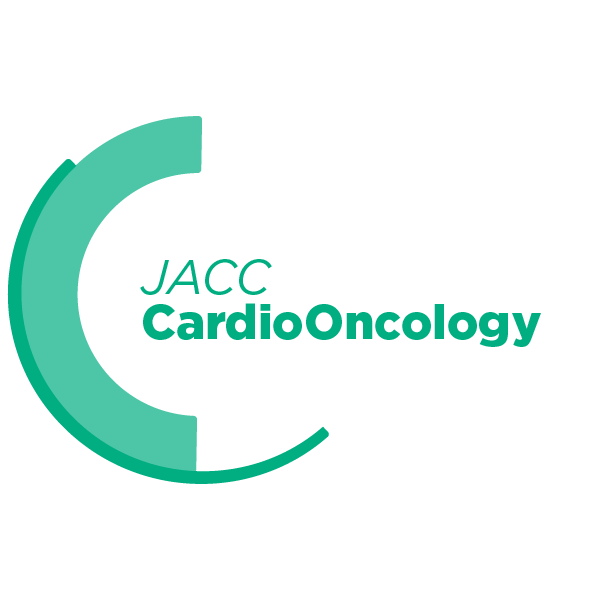
Cardioprotective therapies, especially statins and antiplatelet agents, may be underutilized in patients with a prior or current history of cancer vs. patients without cancer and comparable cardiovascular risk factors, according to a study published in JACC: CardioOncology.
Rossana Untaru, RN, et al., examined the use of cardioprotective medications in a population with a high risk of cardiovascular disease with or without a history of cancer. Cardioprotective medication prescription was assessed pre-admission in this single center, cross-sectional observational study of 333 patients admitted to the cardiology unit between July 2018 and January 2019.
Results showed that of the 69 patients with cancer, 25 (36%) had established cardiovascular disease prior to their cancer diagnosis, while 44 (64%) developed cardiovascular disease after their cancer diagnosis. Cardiovascular risk factors were similar in the patients with vs. without a prior or current history of cancer.
No significant differences were found in age, body mass index, gender, hypertension, diabetes, dyslipidemia or atrial fibrillation between the two groups. However, patients with vs. those without a prior or current history of cancer had lower utilization rates of antiplatelet therapies and statins.
"This [study] highlights practice and policy gaps and the need to develop strategies to improve guideline-directed cardioprotective therapies in cardio-oncology," the authors conclude.
Untaru R, Chen D, Kelly C, et al. JACC CardioOncology 2020;2:312-15.
TICONC: P2Y12 Inhibition With Ticagrelor Reduces Platelet Aggregation, Activation in Patients With Cancer

Data from an in vitro model of platelet-tumor cell interaction and from a crossover in patients with metastatic cancer suggest that ticagrelor monotherapy appears to reduce platelet aggregation and activation. The results from the Ticagrelor-Oncology (TICONC) study were published in JACC: CardioOncology.
In cancer, platelets may facilitate metastatic spread by a number of mechanisms and contribute to thrombotic complications.
Joy R. Wright, PhD, and colleagues first examined an in vitro model of platelet-tumor cell interaction within the circulation to compare the effects of ticagrelor monotherapy and dual antiplatelet therapy (DAPT) with ticagrelor and aspirin on platelet activation and interaction with human breast cancer and colorectal cancer.
Then they conducted a randomized, crossover study to examine the effects of monotherapy with ticagrelor or aspirin compared with DAPT on platelets in patients with breast cancer (n=10) and colorectal cancer (n=6) compared with healthy controls (n=22). The study completion rate was 81.6%.
Results from the in vitro model showed that ticagrelor monotherapy, but not aspirin, primarily reduced tumor cell-induced platelet aggregation and activation in response to human breast cancer cells (MCF-7) and colorectal cancer cells (HT-29). Furthermore, monotherapy with ticagrelor or aspirin significantly reduced adhesion of colorectal cancer cells, but not breast cancer cells, in the presence of platelets.
Results from the crossover study showed that ticagrelor could significantly reduce spontaneous platelet aggregation in patients with metastatic cancer.
This is the first study to examine the possible benefits of ticagrelor in a cancer population, write the authors and is a limitation of the study because direct comparisons are not possible. The small sample size is another limitation.
"These findings support further investigation of the potential role for ticagrelor monotherapy as prophylaxis in cancer patient populations at high risk for thrombotic complications (e.g., venous thromboembolism)," write the study authors, "as well as long-term assessment of its ability to reduce metastatic spread and improve progression-free survival.
Wright JR, Chauhan M, Shah C, et al. JACC CardioOncology 2020;2:236-50.
FlexNav DS For Transfemoral Implantation of Portico Valve Associated With Enhanced Safety Profile
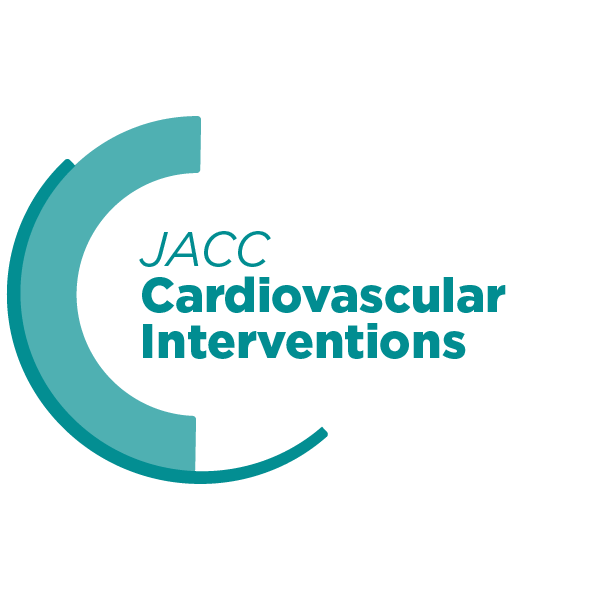
Portico valve implantation with the FlexNav™ Delivery System (DS) was associated with an excellent safety profile at 30 days, characterized by low rates of mortality, stroke and vascular complications, according to a study published in JACC: Cardiovascular Interventions.
Gregory P. Fontana, MD, FACC, et al., sought to characterize the safety profile of an intra-annular self-expanding valve with the next-generation FlexNav™ DS, which builds on the strength of the existing Portico platform. Key design modifications include the addition of a hydrophilic-coated, integrated sheath and stability layer to facilitate gradual, controlled deployment in a vessel diameter ≥5 mm.
The study included 140 high risk and 40 extreme risk patients who underwent an attempted transfemoral Portico valve implant between October 15, 2018 and December 10, 2019 from 28 sites in the U.S., Australia and Europe. Their mean age was 85 years, mean STS score was 5.3% and 96.1% presented with one or more frailty factor. Technical device success was 96.7%.
Results showed that at 30 days, the major vascular complications rate was 5.0%, with 4.4% adjudicated as access-site related (3.3% TAVR DS access-site related). Death (0.6%) and disabling stroke (1.1%) were rare and new permanent pacemaker rate was 15.4%. Furthermore, echocardiography at 30 days revealed a 7.0 mm Hg mean gradient, 1.78 cm2 valve area and 4.1% rate of moderate paravalvular leak.
"The FlexNav™ DS addresses a key limitation of the predicate DS by incorporating an integrated sheath to provide one of the smallest insertion of any commercially available TAVR system," the authors conclude.
Fontana GP, Bedogni F, Groh M, et al. JACC Cardiovasc Interv 2020;June 26:[Epub ahead of print].
CLASP: PASCAL System Associated With Low Complication, High Survival Rates in MR Patients

The PASCAL transcatheter valve repair system was associated with a low complication rate and high survival rate in the treatment of mitral regurgitation (MR), according to a study published in JACC: Cardiovascular Interventions.
As part of the CLASP trial, John G. Webb, MD, FACC, et al., looked at safety and performance outcomes among patients who received the PASCAL system. The primary safety endpoint was a composite of major adverse events, defined as cardiovascular mortality, stroke, myocardial infarction (MI), new need for renal replacement therapy, severe bleeding, and reintervention for device-related complications at 30 days. Primary performance endpoints included procedural and clinical success. Secondary outcomes included one-year rates of MR reduction, major adverse events, all-cause mortality, recurrent heart failure (HF) hospitalization and MR reintervention after one year.
The study enrolled 109 patients who were treated at 14 sites worldwide. Overall, the mean age was 75.5 years, 54% of participants were male and the mean STS score was 4.7%. At baseline, all patients had MR grade 3+ or 4+ and 57% of patients were in NYHA class III or IV.
Overall, the procedural success rate was 94%, with successful implantation occurring in 104 patients (94%). Among patients with successful implantation, the average number of implants was 1.4 per patient. Average procedure time was 128 minutes. The average hospital stay was 2.4 days, with 94% of patients being discharged home. After 30 days, there was one cardiovascular death (0.9%), MR ≤1+ was achieved in 80% of patients and MR ≤2+ in 96% of patients. In addition, 88% of patients were NYHA class I or II at 30 days. One-year follow-up data were available for 62 patients. Of these, there were two cardiovascular-related deaths between 30 days and one year, resulting in an overall cardiovascular mortality rate of 6.5%.
There were no strokes, reinterventions or new need for renal replacement therapy at one year. There was one patient (1.6%) who experienced an MI that was unrelated to the procedure. There were two severe bleeding events between 30 days and one year. In addition, at one year, the all-cause mortality rate was 8.1% and the HF hospitalization rate was 12%.
In an accompanying editorial comment, Stephan Windecker, MD, et al., write that "head-to-head comparisons" of the PASCAL system and MitraClip system "will be of interest." They conclude that the "choice between different devices and sizes will further broaden the spectrum of anatomical settings amenable to leaflet approximation enabling a more individualized approach adapted to the multiplicity of mitral valve pathologies."
Webb JG, Hensey M, Szerlip M, et al. JACC Cardiovasc Interv 2020;June 25:[Epub ahead of print].
TEE Associated With Esophageal or Gastric Injury in Structural Heart Intervention
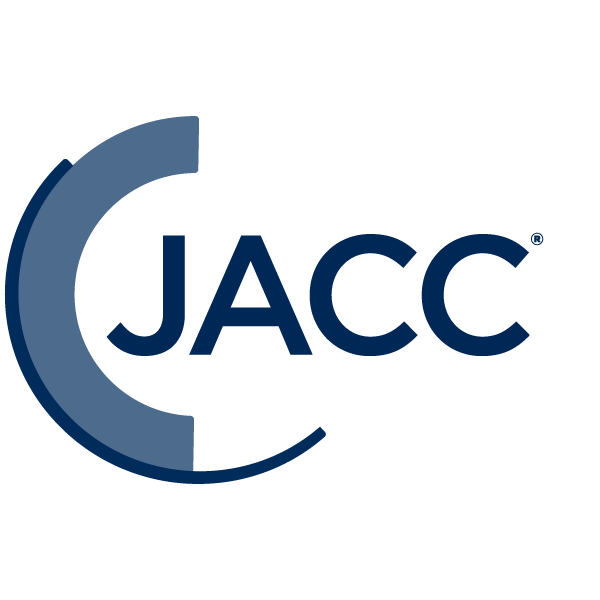
The use of transesophageal echocardiography (TEE) for guiding structural heart disease interventions was associated with some degree of esophageal or gastric injury in the vast majority of patients, according to a study published the Journal of the American College of Cardiology.
Afonso B. Freitas-Ferraz, MD, et al., sought to determine the incidence, types of complications and factors associated with esophageal or gastric lesions following TEE manipulation during structural cardiac interventions due to the widespread use of TEE and lack of studies evaluating safety in this context.
The study examined 50 patients undergoing cardiac structural interventions in which TEE played a central role in guiding the procedure. Patients included in the study underwent edge-to-edge mitral valve repair (n=20), tricuspid valve repair (n=2), left atrial appendage closure (n=24) and paravalvular leak closure (n=4).
An esophagogastroduodenoscopy (EGD) was performed before and immediately after the procedure to assess new injuries that may have arisen during the intervention.
Results showed a new injury in 86% (n=43) of patients, with complex lesions accounting for 40% (n=20) of cases. Patients with complex lesions presented more frequently with an abnormal baseline EGD and had a higher incidence of postprocedural dysphagia or odynophagia. Longer procedural time under TEE manipulation and poor or suboptimal image quality were independent factors associated with an increased risk of complex lesions.
"These results highlight the clinical relevance of being aware of predisposing factors and the nature of potential TEE complications during structural cardiac interventions, in order to improve their prevention, prompt diagnosis, and optimize management strategies," write the study authors.
"[This] study marks an important advance in our understanding of the complications related to TEE during structural heart interventions," write Jayashri R. Aragam, MD, and Zaid I. Almarzooq, MBBCH, in an accompanying editorial comment.
"Also, it highlights the importance of evaluating patients' pre-procedure risk profile before deciding on an optimal imaging strategy during transcatheter interventions and adhering to guideline-directed steps to minimize the occurrence of TEE-related gastroesophageal injuries."
Freitas-Ferraz AB, Bernier B, Vaillancourt R, et al. J Am Coll Cardiol 2020;75:3164-73.
Research Shows Promising Early Experience With Transseptal EVOQUE TMVR System

The first-in-human experience with the transseptal EVOQUE transcatheter mitral valve replacement (TMVR) system demonstrated feasibility in a high surgical-risk population, including functional and degenerative mitral regurgitation (MR), according to research published in JACC: Cardiovascular Interventions.
John G. Webb, MD, FACC, et al., evaluated the novel EVOQUE TMVR which uses the transseptal approach. The EVOQUE valve consists of a self-expanding nitinol frame, bovine pericardial leaflets and fabric skirt to minimize paravalvular leak. The valve has a unique anchoring mechanism that uses the annulus, leaflets and chords for secure placement in the anatomy. The delivery system offers extensive maneuverability and stability resulting in a controlled deployment without hemodynamic compromise.
Fourteen patients with significant symptomatic MR were treated with the EVOQUE TMVR system from September 2018 to October 2019. Their median age was 84 years and median STS score was 4.6%.
Results showed that technical success was achieved in thirteen patients and one patient was converted to surgery. At 30 days, there was one noncardiovascular death, two strokes, no myocardial infarctions and no rehospitalizations.
Furthermore, two patients required paravalvular leak closure and one underwent alcohol septal ablation for left ventricular outflow tract obstruction. MR was mild or better in all implanted patients at 30 days, including the two who had paravalvular leak closure, with no MR in ten patients. At 30 days, the mean mitral gradient was 5.8 mm Hg and nine patients had improvement in functional class to NYHA II or better.
"TMVR is a welcome addition to the range of options available in the contemporary management of mitral valve disease," the authors conclude.
"This transseptal approach to TMVR potentially offers advantages over a transapical approach. Continued clinical studies will continue to clarify its role within the armory of mitral interventions."
Webb J, Hensey M, Fam N, et al. JACC Cardiovasc Interv 2020;June 29:[Epub ahead of print].
Study Explores CTCA-based Fluoroscopic Viewing Angles For PCI Procedures

Computed tomography coronary angiography (CTCA) could be used to define the optimal fluoroscopic viewing angles of the coronary arteries to assist operators with coronary angiography and staged PCI procedures, according to findings from a study published in JACC: Cardiovascular Interventions.
Viktor Kocˇka, MD, PhD, and colleagues sought to provide a scientific basis, rather than the historical empirical approach, for using 3D multislice CTCA to determine the optimal viewing angles of the left and right coronary artery ostia and proximal coronary bifurcations. They conducted a retrospective analysis of 100 CTCA scans of consecutive patients for suspected coronary artery disease at a single center in Prague, Czech Republic.
Two of 100 MSCT scans were not included in the analysis due to poor image quality. Coronary distribution was right dominant in 77 patients (79%), left dominant in 15 patients (15%) and codominant in six patients (6%). No significant associations were found between the heart axis and coronary artery structures (all correlation coefficients <0.5).
The results showed that for ostial left main stenting, the average optimal viewing angle was 37 for the left anterior oblique (LAO) and 22 for the caudal view. For ostial right coronary stenting, it was LAO 79 and CRA 41. The average optimal fluoroscopic viewing to mitigate foreshortening of the proximal left main up to 8 mm was LAO 1 and CRA 37. The analysis showed that in approximately 70% of patients it would be possible to achieve practical views for ostial and proximal left main stenting.
The estimated mean optimal viewing angles for bifurcation stenting were: left main, LAO 0 and CAU 49; left anterior descending with first diagonal branch, LAO 11 and CRA 71; left circumflex bifurcation with first marginal branch, LAO 24 and CAU 33; and posterior descending artery and posterolateral branch, LAO 44 and CRA 34.
According to the authors, this is a novel method to define optimal viewing angles of coronary arteries which could modify the standard coronary angiography projections. However, they note that not all CTCA-defined fluoroscopic viewing angles are practical or achievable with existing C-arm equipment. Furthermore, across patients, optimal fluoroscopic viewing angles for coronary ostia and bifurcations are highly variable despite a reproducible methodology.
They write, "Given the increasing use of CTCA for diagnostic and prognostic purposes, the proposed approach could be integrated in the usual workflow and provide patient-specific, individualized information to PCI operators." Future efforts should focus on studies assessing the agreement between predicted tomographic optimal viewing angles and invasive angiography and the impact it may have on clinical outcomes.
Kocˇka V, Theriault-Lauzier P, Xiong T-Y, et al. JACC Cardiovasc Interv 2020;June 25:[Epub ahead of print].
Clinical Topics: Arrhythmias and Clinical EP, Cardiovascular Care Team, Dyslipidemia, Invasive Cardiovascular Angiography and Intervention, Noninvasive Imaging, Valvular Heart Disease, Atherosclerotic Disease (CAD/PAD), Atrial Fibrillation/Supraventricular Arrhythmias, Nonstatins, Novel Agents, Statins, Interventions and Coronary Artery Disease, Interventions and Imaging, Interventions and Structural Heart Disease, Angiography, Computed Tomography, Echocardiography/Ultrasound, Nuclear Imaging, Mitral Regurgitation
Keywords: ACC Publications, Cardiology Magazine, Platelet Aggregation Inhibitors, Platelet Aggregation, Aspirin, Cardiovascular Diseases, Hydroxymethylglutaryl-CoA Reductase Inhibitors, Blood Platelets, Atrial Fibrillation, Ethnic Groups, Breast Neoplasms, Cross-Sectional Studies, Minority Groups, Risk Factors, Platelet Function Tests, Coronary Angiography, Platelet Activation, Coronary Artery Disease, Echocardiography, Transesophageal, Survival Rate, Mitral Valve Insufficiency, Retrospective Studies, Mitral Valve, Incidence, Percutaneous Coronary Intervention, Myocardial Infarction, Feasibility Studies, Tomography, X-Ray Computed

